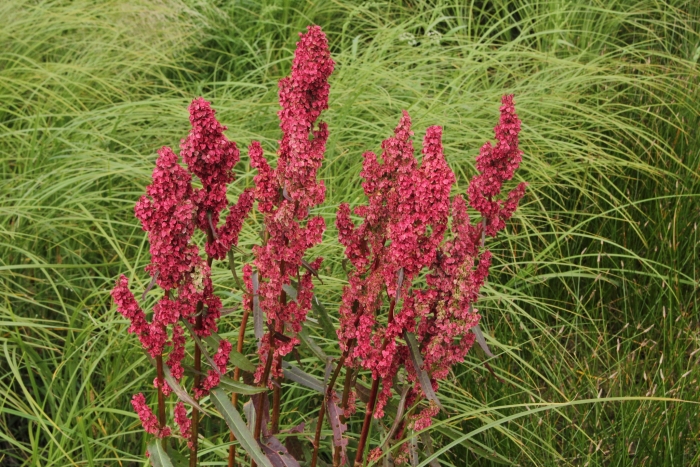Western Dock
(Rumex occidentalis)
Western Dock (Rumex occidentalis)
/
/

© Quinten Wiegersma
CC BY 4.0
Image By:
© Quinten Wiegersma
Recorded By:
Copyright:
CC BY 4.0
Copyright Notice:
Photo by: © Quinten Wiegersma | License Type: CC BY 4.0 | License URL: http://creativecommons.org/licenses/by/4.0/ | Uploader: birds_bugs_botany | Publisher: iNaturalist |

























Estimated Native Range
Summary
Rumex occidentalis, commonly known as Western Dock, is a perennial herb native to wetland areas of North America. It thrives in moist environments such as marshes, bogs, wet meadows, and shallow water habitats. Western Dock can reach up to 71 inches in height and is characterized by its large, triangular leaves and reddish-brown achenes that appear after the flowering period in late spring and summer. The flowers are small and not particularly showy, but they do contribute to the plant’s overall appearance.
Western Dock is valued for its nutritional and medicinal properties. The young leaves are edible and can be cooked similarly to spinach, while the seeds can be ground into a powder for seasoning or gruel. In traditional medicine, the leaves are used in herbal sweat baths and poultices for wounds. In cultivation, it requires consistently moist soil and can tolerate partial shade to full sun conditions. While not commonly used in ornamental horticulture, it can be a useful plant for naturalized wetland restoration projects or as part of a native plant garden. Gardeners should be aware that it can spread readily in suitable conditions and may require management to prevent unwanted naturalization.CC BY-SA 4.0
Western Dock is valued for its nutritional and medicinal properties. The young leaves are edible and can be cooked similarly to spinach, while the seeds can be ground into a powder for seasoning or gruel. In traditional medicine, the leaves are used in herbal sweat baths and poultices for wounds. In cultivation, it requires consistently moist soil and can tolerate partial shade to full sun conditions. While not commonly used in ornamental horticulture, it can be a useful plant for naturalized wetland restoration projects or as part of a native plant garden. Gardeners should be aware that it can spread readily in suitable conditions and may require management to prevent unwanted naturalization.CC BY-SA 4.0
Plant Description
- Plant Type: Herb
- Height: 3-6 feet
- Width: 1-2.5 feet
- Growth Rate: Moderate
- Flower Color: Green
- Flowering Season: Summer
- Leaf Retention: Semi-deciduous
Growth Requirements
- Sun: Full Sun, Part Shade
- Water: High
- Drainage: Medium, Slow, Standing
Common Uses
Erosion Control, Low Maintenance, Water Garden
Natural Habitat
native to wetland areas of North America
Other Names
Common Names: Water Dock, Swamp Dock, Windowed Dock
Scientific Names: , Rumex occidentalis, Lapathum occidentale, Lapathum occidentale, Lapathum occidentale, Rumex aquaticus subsp. fenestratus, Rumex aquaticus subsp. fenestratus, Rumex aquaticus subsp. occidentalis, Rumex aquaticus var. fenestratus, Rumex bakeri
GBIF Accepted Name: